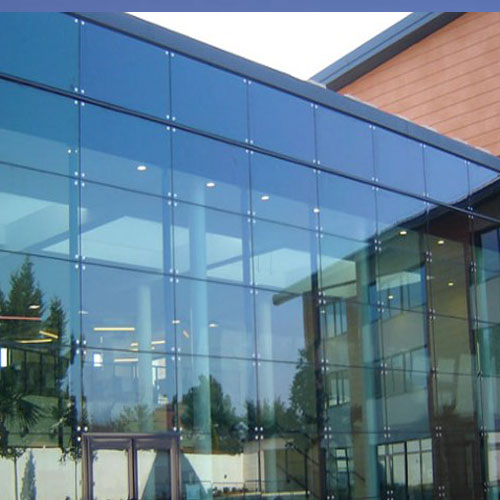SIMSA specializes in comprehensive glass facade solutions. Large and demanding glass facades are our specialty. We implement surface and glass structures, thermocouple and aluminum glass structures, primarily with regard to the specific requirements of each project. We will let the references of already implemented solutions speak for themselves.
Speed ,Accuracy and Quality is our strength. To speed up the installation work, the fascade elements are already manufactured in our production factories as large blocks as possible, with high level of needed equipment – containing glass and envelope. Accurately dimensioned glass elements are installed on the aluminium or steel profile systems according to the desired time schedule.
Glass art requires wide technical know-how. Small details are making great importance to the entity. We always accomplish the whole process to the customer’s terms from the planning stage to the last quality assurance measurements.
The popularity of feature-rich glass facades is constantly increasing. A glass facade is a great choice for creating pretentious, stylish and energy-efficient solutions. Spacious and brightness gives the building its own visual appeal not to forget the features of glass – guaranteed quality and sustainability.
We offer creative and customized facade solutions for all structures
cost-effectively with long quality guarantee, whether you are in need of glass roofs, glass double glazed facades, window sills or glass doors. We can also deliver solutions with its interfaces as finished product parts.

Advantages of Glass Facades
- The materials used in glass facades are extremely strong and durable. They’re designed to resist major weather elements, including high winds, rain etc.
- A unique transparent material that allows light to pass through it so that the objects behind the glass are visible clearly.
- Has a smooth glossy surface, so it is dustproof and can be cleaned efficiently. Unlike other materials, it is easy to maintain.
- Available in a wide range of colours, and when we combine the glass sheet in laminated or insulated units, it changes in colour and appearance.
- Glass is UV stable since it is not affected by ultraviolet radiation and hence cracks, discoloration or disintegration will not occur.
- Glass is an excellent insulator and does not readily conduct electricity,
- Glass is corrosion resistant, and only under certain conditions, the glass is chemically attacked.
- It can withstand the effects of the wind, rain, or the sun and can retain its appearance and integrity in most of the given conditions.
- It can transmit 75%-80% of the natural light in both the directions, something which no other substitute does.
- It can be made translucent or molded in different shapes, it can offer a lot of flexibility to the architect in terms of usage in the building.
- Glass does not rust so it is better than iron and does not succumb to its surrounding environmental conditions.
- Reduces weight on the foundation of the building and makes the building lighter as compared to walls.
- In addition to all of the functional benefits of a glass facade, one of the biggest advantages is how it looks.
Different types of glass facades
Curtain Wall Facades
Non-load bearing curtain-like structures are attached to the floor of the building in which the façade is to be incorporated. Such facades have to support only their weight and not the dead load weight imposed by the building. Connections exist between the curtain wall and the building’s columns and floors so that the weight of the wind can be transferred from the façade.

Storefront Wall Curtain Facades
Non-load bearing façade type designed primarily for ground floors. It spans between the ground and the roof of the building above it and offers optimal thermal and sound insulation when constructed using specialised glasses. It is a cost-effective option and can be customised.

Framing Facades
Stick system
Built from long vertical extrusions or support mullions that are attached to the building’s structure. Typically, shorter horizontal extrusions span between the vertical mullions, creating a rectangular frame that binds the glass on all four sides.

Unitized Curtain Wall
Composed of large units that are pre-assembled and glazed in the factory before shipping to the building site for installation. With unitized curtain walls forming the core component of the external envelope of the building, thermal efficiency, sound transmission and fire safety become the key performance criteria of the system.
Semi Unitized curtain wall- A type of structural glazing where the primary structural framing components are erected individually as an erector set. In this set, the vertical mullions are attached first to the floor slabs and the horizontals are attached to the vertical mullions to resemble a grid.

Frameless Facades
Frameless Glazing systems are more commonplace in modern-day architectural glazing. As a system, frameless glazing offers huge potential within architectural glazing design. Frameless Glazing is an excellent way of maximising the level of natural daylight transmitted through a structure, whilst mitigating the effect on both the glass structures’ internal and external aesthetics.

Tension system
These facades use high tensile cables or stainless steel rods to impose loads of the facade on the main structure. This decreases the amount of solid structural elements visible on the project, therefore increasing the transparency of the facade. The two main types in the industry are tension rod facades and cable net walls.



